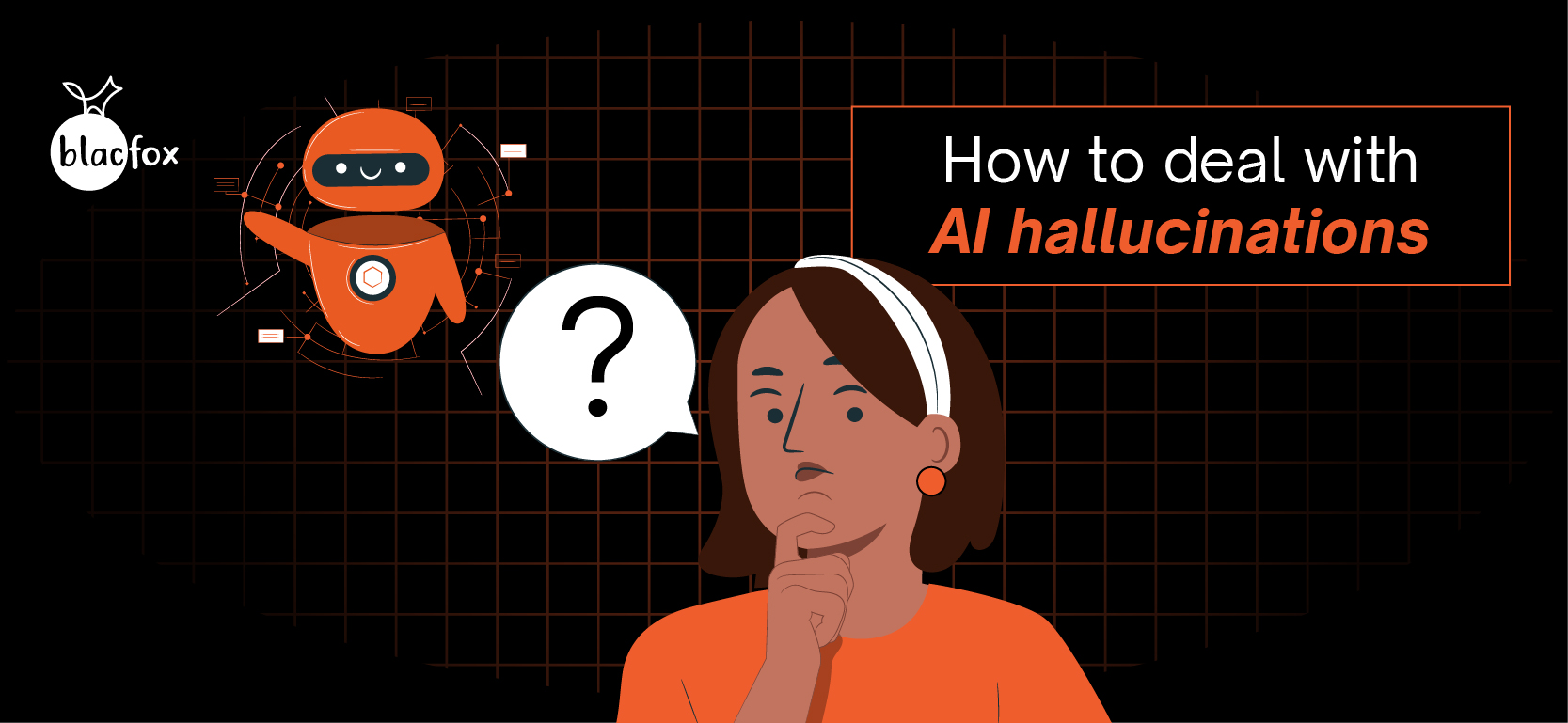
Generative AI is clearly changing the way marketers create content, offering a level of speed that’s tough to beat. But no tool is perfect. One of the biggest challenges you’ll face when using generative AI is AI hallucination.
If you’re using generative AI to write copy, this is something you need to be aware of. In this blog, we’ll explain what AI hallucinations are, why they matter for marketers, how to spot them, and how to keep them to a minimum.
What are AI hallucinations?
AI hallucinations happen when your AI tool, like ChatGPT, spits out content that sounds like it makes sense, but is inaccurate or made up. This can be a problem when you’re relying on AI to create blogs, product descriptions, or social media posts—where getting your facts straight really matters.
Here’s an example: You ask an AI tool to write a blog about the latest trends in digital marketing, and it throws in some random statistics or misquotes a key figure. Why? Because AI models are built to predict language patterns, but when they don’t have all the information, they “guess.” The result? You get content that sounds legit, but it’s not.
Why AI hallucinations are a problem for marketing
One of the most important elements of marketing is trust, and your audience expects accurate, trustworthy information. If your AI-generated content has made-up facts or misleading data, it can damage your brand’s reputation. Trust is hard to build, and one small mistake, like a fake stat or wrong product detail, can break that trust and cost you sales.
Plus, there’s more at stake than just looking bad. If AI-generated content leads to misinformation, you could possibly face legal issues, especially if those mistakes influence consumer decisions or break advertising rules. Long story short—AI hallucinations aren’t just a minor glitch. They’re something you’ll want to keep in check.
Causes of AI hallucinations
Now, let’s talk about what causes these AI hallucinations. Knowing why they happen can help you avoid them.
- Insufficient or Biased Training Data: AI models learn from massive datasets, but if the data they’re trained on isn’t complete or accurate, hallucinations happen. This is especially true if the AI hasn’t seen enough industry-specific content—it starts filling in gaps with incorrect info.
- Ambiguous or Complex Prompts: How you ask matters. If your prompt is vague, missing details, or overly complex, the AI might not know what you want and could generate content that’s way off target.
- Lack of Real-Time Information: Generative AI tools don’t always have access to the latest info. So, if you’re working in a fast-paced industry like marketing or tech, the AI might pull outdated facts and present them as current.
How to deal with AI hallucinations
AI hallucinations can’t be stopped entirely—they’re just part of how these tools work (for now). But you can mitigate its impact. Here’s how:
- Look for Inconsistencies: Hallucinated content can feel disjointed or contradictory. If the AI is jumping from one idea to another without a smooth transition, or if the information seems off, that’s a red flag.
- Fact-Check the Output: AI is a fantastic tool, but it’s not a replacement for human oversight. Always double-check any facts, stats, or technical details the AI gives you. Don’t just take its word for it. Cross-check info with trusted sources before hitting publish.
- Provide Clear, Specific Prompts: Want better output? Give better instructions. Keep your prompts clear and specific, so the AI knows exactly what you’re looking for. The more detail you provide, the less likely the AI will start “guessing”.
- Challenge the AI: If you suspect that the AI has made a mistake or provided inaccurate information, ask it if what it said is true. You can hit it with questions like “Is this information actually correct, or did you make it up?” The AI may reconsider the input and admit to the inaccuracy. Doing this can lead to a more accurate, refined response.
- Provide specific information: When using an AI tool, provide as much data, information and context as possible. With tools like ChatGPT, you can upload documents, references, or data and instruct the AI to pull from that content only. By giving the AI a foundation of information, you minimise the risk of hallucinations.
Conclusion
Generative AI has given marketers a faster and smarter way to create marketing copy. But it’s important to keep in mind that AI isn’t perfect—hallucinations happen. As a marketer, it’s your job to catch them and make sure your content is on point. By mixing the speed of generative AI with a human touch, you can get the best of both worlds.

